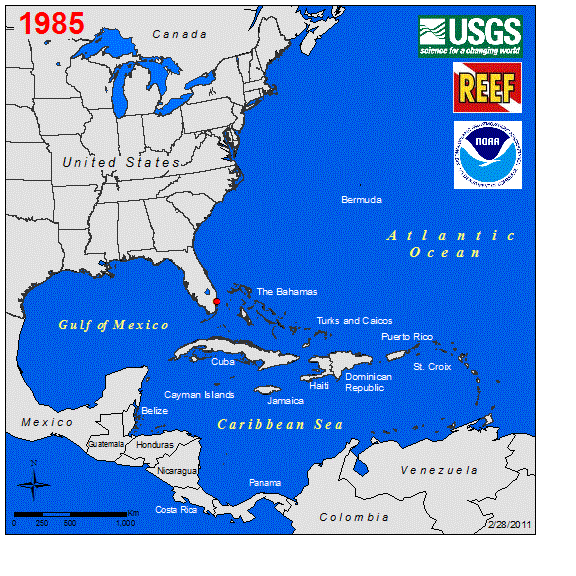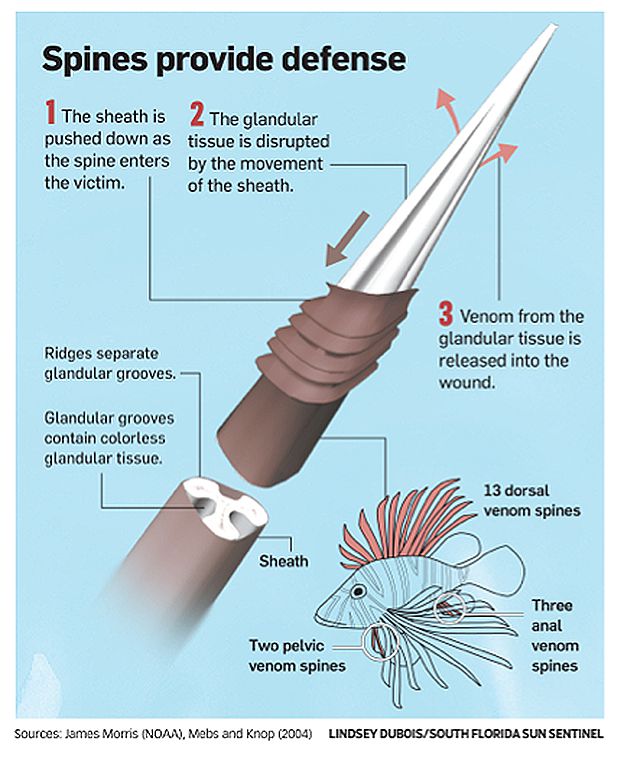Lionfish
- are a type of scorpionfish, from the family Scorpaenidae
- are native to the Indian and Pacific Oceans
- are popular aquarium fish, often kept as pets
- are an invasive species in Bermuda
- were released, accidentally or deliberately, into the Atlantic in the 1980's
- have invaded the Eastern US, Bermuda, Caribbean Sea and Gulf of Mexico
- are indiscriminate predators feeding on 70 different species of fish and crustaceans
- have no natural predators in the Atlantic and prey do not recognize them as a threat
- have 18 venomous spines
- are sexually mature in approximately 1 year
- each female can release over 2 million eggs in a single year
Lionfish in Bermuda
- were first recorded in April 2001, but the individual was actually caught the summer before in a tide pool in Devonshire Bay
- are found in very shallow water and down to depths greater than 250 ft
- have been reported in all sizes, from juveniles about 4 inches in length to the world record, nearly 19 inches, that was caught in Bermuda.


Lionfish have 18 venomous spines capable of inflicting a painful sting, much like a severe bee sting. Sometimes there are more serious symptoms, such as nausea and dizziness, but these may be more connected to the human stress response than the venom itself. As the lionfish population continues to grow, so does the possibility of injuries through envenomation to fishermen, divers, and others whom otherwise handle or come into contact with lionfish. It is essential that health and safety messages be provided to all sectors of the community.

Lionfish have 13 dorsal spines that run the length of the fish's back, 3 anal spines, and 2 pelvic spines, all capable of causing envenomation (coloured red, see above). Each spine is covered by a thin sheath of skin which, when depressed, shreds a small pair of venom glands near the base of the spine (see below). The venom then travels from the glands through small grooves in the spine towards the wound. Aside from the pain caused by the venom, a person risks secondary infection, which may require antibiotic treatment, if the wound is not cleaned. If the person has other health issues, such as certain allergies, an envenomation may have more severe consequences.
Safe Handling:
- Do not touch the spines
- Venom maintains its toxicity for some time after the lionfish dies
- To dissect or fillet a fish, remove all spines first

If you do get stung:
- Immerse affected area in hot water, as hot as you can stand without scalding, for 15-20 minutes or longer until the pain subsides. This helps to break down the venom.
- Clean wound thoroughly, as you would any similar injury.
- Major symptoms include throbbing at site, tingling, sweating and blistering
- It's always wise to call your doctor, but he/she will probably tell you the same.



